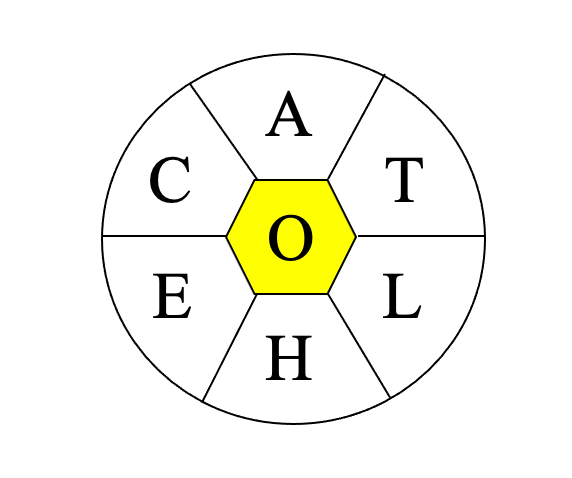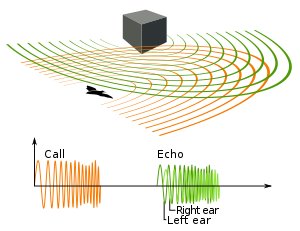Echolocate: The Spelling Bee's Curious Oversight
Written on
Understanding Echolocation
In today’s edition of the New York Times Spelling Bee, the featured letters are:

A, C, E, H, L, T, and the center letter O (all words must include O).
According to Merriam-Webster...

Oh dear dictionary! How can "echolocate" not be a word if the New York Times hasn't recognized it?
For more intriguing insights, be sure to visit the Spelling Bee Master. What was your favorite unusual word from today’s challenge?
My Thoughts
How many of you read "echolocate" and momentarily saw "echocolate"? Raise your hand—I'm guilty of this little mix-up, too, even though I knew the correct term. This phenomenon, known as metathesis, originates from the Greek term "metatithenai," meaning "to transpose."
These amusing mix-ups are also referred to as spoonerisms, especially when intentional. The term is named after William Archibald Spooner, an Oxford minister famous for his verbal slip-ups, although most attributed to him are likely apocryphal. He claimed to have made only one such mistake in his lifetime.
Here are some classic examples of spoonerisms attributed to him:
- "Three cheers for our queer old dean!" (instead of "dear old queen")
- "Is it kisstomary to cuss the bride?" (rather than "customary to kiss")
- "The Lord is a shoving leopard." (instead of "a loving shepherd")
- "A blushing crow." ("crushing blow")
- "A well-boiled icicle" ("well-oiled bicycle")
This reminds me of my favorite short joke: A dyslexic man walks into a bra...
The Bat Connection
It's no wonder Merriam-Webster used bats in their example sentence for "echolocate." Bats are the most prominent creatures associated with this remarkable ability. You might wonder if the phrase "as blind as a bat" contributes to their fame, but that’s a myth. Bats are quite adept at flying without colliding with obstacles, showing impressive echolocation skills.
Or perhaps bats' notoriety stems from a certain superhero who doesn't echolocate at all...

Dolphins and whales also share this remarkable ability, placing them just behind bats in the echolocation hierarchy.
The term "echolocation" is essentially a combination of "echo" (the rebound of sound waves) and "locate" (to find). Merriam-Webster elaborates that echolocation is the method used by certain animals (like bats) to navigate and avoid obstacles, particularly in darkness, by emitting high-frequency sounds that bounce back from surrounding surfaces, revealing their distance and direction.
These high-frequency sounds, known as ultrasounds, surpass human hearing capabilities. Luckily, Petteri Aimonen provided a visual representation of bat echolocation, which is available in the public domain.

Surprisingly, other animals such as some shrews, tenrecs, and even rats possess echolocation abilities. The oilbird and swiftlet are also known for this skill. If you're curious about tenrecs, they are small mammals resembling shrews or hedgehogs, primarily found in Madagascar.

The Discovery of Echolocation
The concept of bat echolocation was first examined by Italian priest Lazzaro Spallanzani, a true polymath of the post-Renaissance era. By 25, he was already a professor of logic, metaphysics, and Greek at the University of Reggio, having previously studied law, mathematics, and natural philosophy.
A statue of Spallanzani in his hometown of Scandiano depicts him studying a frog with a magnifying glass.

Spallanzani had a profound passion for exploration. Here’s a glimpse of his extensive studies:
- He challenged the theory of spontaneous generation by boiling gravy and sealing it in glass, proving no life forms emerged. It took another century for Louis Pasteur to fully refute this theory.
- His research on digestion revealed that the process includes both physical and chemical components.
- He established that sperm and egg must unite for fertilization, performing the first known in vitro fertilization in frogs and artificial insemination in dogs.
- Spallanzani’s experiments with bats led him to conclude that they could navigate in complete darkness, demonstrating their echolocation capabilities.
However, his research methods were less than humane; he subjected bats to cruel experiments that involved removing their eyes and blocking their ears.
In a more positive light, he is credited with naming the tardigrades, which are adorable tiny creatures commonly known as "water bears" or "moss piglets."

As far as I know, Spallanzani never conducted experiments on these resilient creatures or investigated whether they could echolocate.
One wonders why "echolocate" was dismissed from the Spelling Bee. Could the editors have mistaken it for the spoonerism "echocolate," deeming it a ghost word?
For further reading on another ghost word, check out my previous entry:
Peepul
Even being one of the oldest trees in the world wasn't enough for the Spelling Bee...
What is a ghost word, you ask? Here’s the answer:
'Dord': A Ghost Word
One of the intriguing questions lexicographers face is whether something can be sneaked into the dictionary.
www.merriam-webster.com
The first video titled "Human echolocation lets blind man 'see'" explores how some individuals utilize echolocation to navigate their surroundings effectively.
The second video titled "Echolocation" provides an overview of how various animals, including bats and dolphins, use this remarkable skill to interact with their environment.